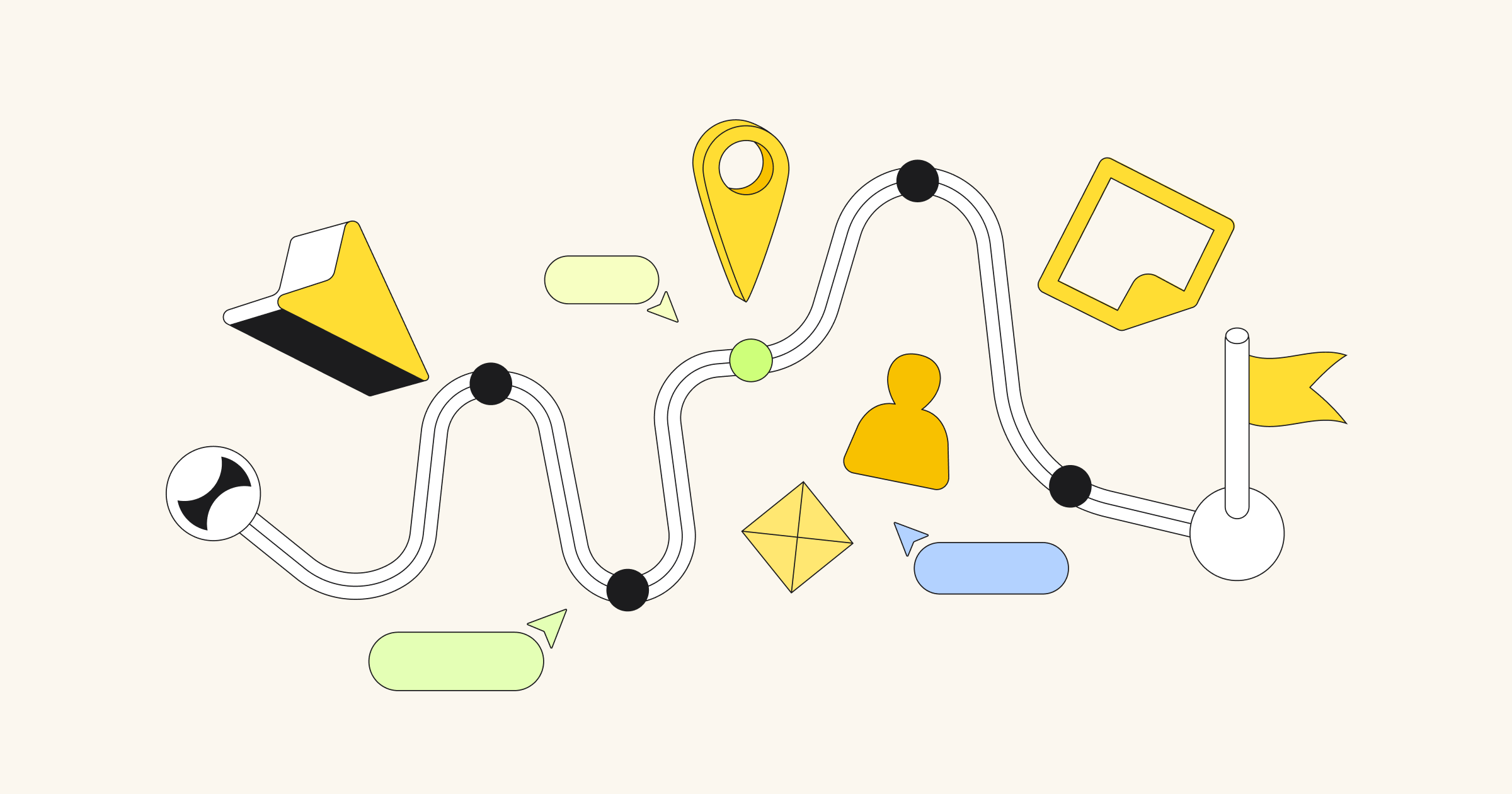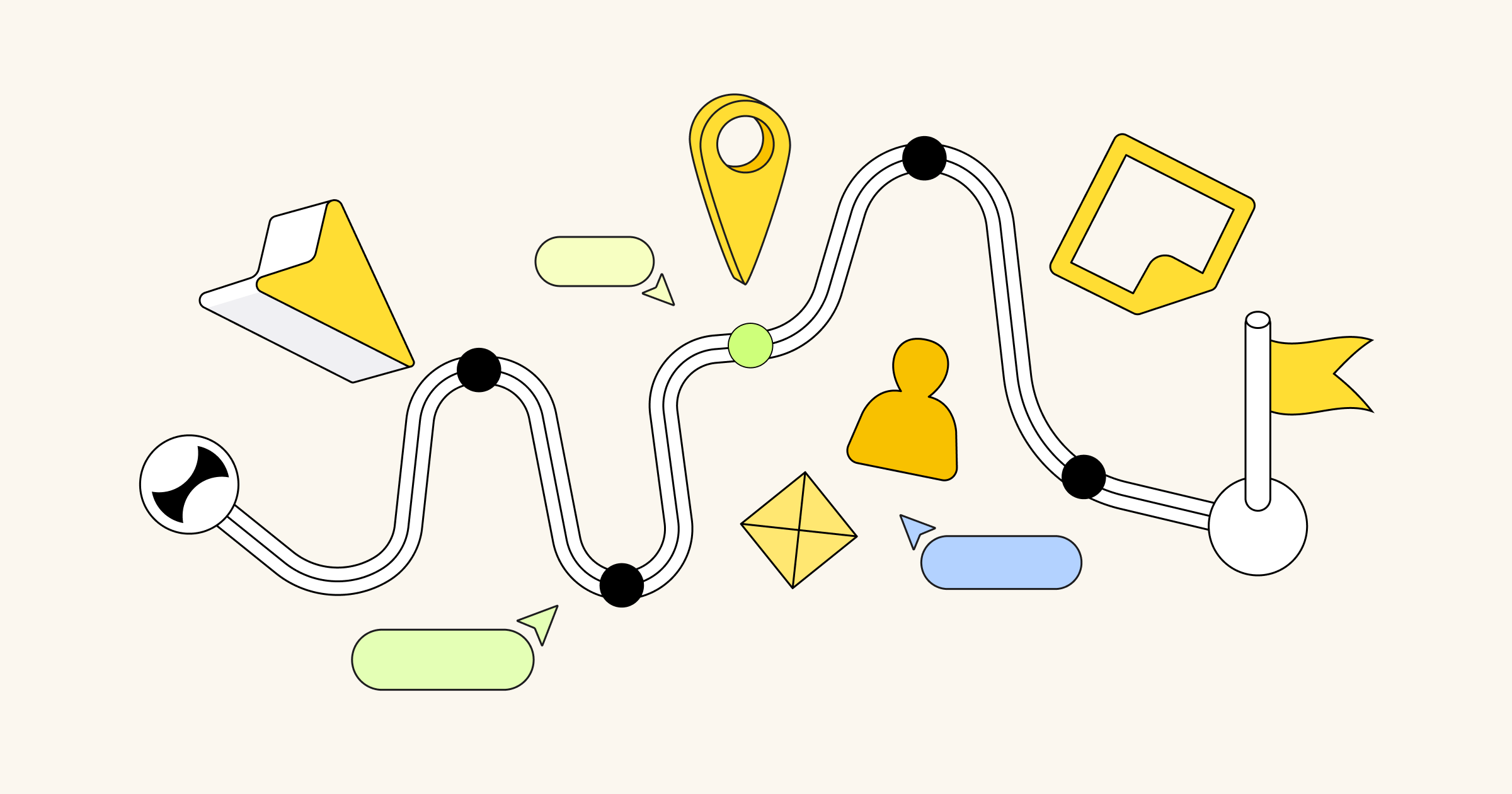Aligning work around outcomes instead of just chasing the next feature idea is one of those things that product teams often want to nail, but rarely get right. It’s because most of the frameworks we use prioritize tangible rock-solid features over hard-to-measure effects.
Just look at how obsessed some Scrum teams are with the number of user stories they can squeeze into a sprint, their velocity, or the number of pre-defined feature ideas they have to “refine” through what I like to call “Alibi Product Discovery.”
But all this talk about a mythical unicorn called “outcomes” won’t help teams break the wheel. Instead, they need to be able to connect individual features to behaviors worth changing and metrics that matter for the business.
Meet Impact Mapping.
Impact vs. Outcome vs. Output
First, it’s important to sort out all those terms which often get used interchangeably in product development.
Let’s start at the top.
An impact metric helps you to describe where you want to be as a company or business, expressed through a result. It’s often the most high-level, yet most important metric for the business. In other words, it is a high-level expression of business health. Of course, the impact can be a North Star Metric, but it can also be a “simple” business KPI.
The 3 True-North Metrics that Your Product and Business Need
As impact metrics are often lagging indicators whose change depends on many projects/initiatives/events coming together, product teams need something more tangible to measure their progress. Outcome metrics help a team know that they got to the place where the business wants to be, by looking at measurable changes in behavior.
As Josh Seiden puts it , an outcome is “a change in human behavior that creates value.” And the above-mentioned impact metrics will only change as a result of specific customer behaviors coming together. Outcomes are the measures of these different customer behaviors.
But in order to change those human behaviors, you need to build “stuff.” And this is where outputs come in. They represent the features or products you will build, keeping the change in behavior you want to cause in mind. It’s what product teams cycle through in their sprints and release on an ongoing basis.
Impact vs. Outcome
Impact metrics:
Where do we want to be, expressed through a result.
Outcome metrics:
How will we know that we got there, by looking at measurable changes in behavior.
Looking at how drastically different those three terms are, it should become clear why jumping from high-level business impacts straight into solutions is so dangerous.
In order to empower product teams to own the decision-making process of what to build, they need to be aware of different paths to create an impact. This is where Impact Mapping can unlock empowerment for product teams.
Why use Impact Mapping?
Avoiding jumping from an overarching business goal straight into solutions is vital for outcome-oriented product management.
The structure of an Impact Map encourages product teams to work through the map level-by-level, supporting a focus on the immediate next steps.
Impact Mapping is the helpful bridge product teams need to connect the two things executives and stakeholders care the most about: business impacts and feature ideas.
In addition, Impact Mapping helps a team to make sense of the ongoing stream of insights and evidence they collect. Instead of storing user feedback in a disconnected silo, Impact Mapping allows for putting it into the right context.
Teams can use it as a landscape of their problem space by treating it as an evolving element. As soon as a new actor or user behavior “appears,” the decision of whether it’s worth pursuing can be answered by holding it against an Impact Map.
What are Impact Mapping Use Cases?
There are two prime examples of situations in which a product team can utilize Impact Mapping most effectively.
Once, when the existing product/feature landscape needs to be clarified to ensure outcome-orientation and strategy alignment of new and existing ideas. This happens e.g. as part of a quarterly or yearly review and planning session. The product team can utilize impact mapping to focus the conversation on goals and blind spots, instead of features. It’s an effective way to point out if feature ideas don’t contribute to the strategic direction of the company and are therefore not worth pursuing.
The second scenario is when a product team needs guidance working with the insights and evidence from their Product Discovery mission. The intent behind every level of an Impact Map can be perfectly aligned with the continuous and iterative set of activities a team is working through.
An Impact Map also becomes a useful tool to keep executives and stakeholders up-to-date regarding the discovery process without causing “death by PowerPoint.”
What is Impact Mapping?
The original idea of Impact Mapping can be attributed to Gojko Adzic. He popularized the concept in his 2012 book on the topic. In this version of the framework, he defined it as a 4-level process and introduced the idea of answering one specific question with every level of product development:
- WHY
- WHO
- HOW
- WHAT
A lot of core ideas of his definition of Impact Mapping still hold true up to this day. However, based on my experience, I like to introduce a revised version of Impact Mapping which makes it more effective for Product Teams.
Level 1: WHY
This level intents to provide the overall strategic goal you want to contribute to. This is why it makes sense to use an impact metric to articulate the WHY. Essentially, this level aims to answer the question of WHY this opportunity/mission/initiative is worth pursuing.
Besides “justifying” the efforts of a business or a team through this impact metric, it’s also an important guiding principle for the team to make trade-off decisions later on.
In order to make the WHY more tangible, articulating the ambition level about the timing and the difference you seek to create is helpful.
Here are some examples of impact metrics to add to the WHY level of your Impact Map:
- “Increasing user conversion by 20% in three months”
- “Increase the number of Weekly Active Users by x until the end of the year”
- “Close 10 Enterprise Contracts within the next 12 Months”
- “Improve Customer Effort Score by 1.5 points until the end of Q4”
Those metrics shouldn’t be treated as dogma, but a representation of the overall ambition level.
Level 2: WHO
Now it’s time to map out WHO can help you to achieve this goal. This level helps you to create clarity in which actors play any kind of role in changing the impact metric.
While it might be easy to list some of the very obvious actors right away, uncovering second-degree actors is where the magic happens. By digging deeper into a seemingly mundane interview or survey response, you might be able to map out actors you haven’t paid attention to before e.g. relatives of your users, administrative supporting roles, or read-only users which still matter to your product. So, in short: You don‘t just want to look at actors from an external perspectives like users or customers, but also including internal roles which could matter, like stakeholders.
Here are some examples of actors being placed on the WHO level of an Impact Map:
- The marketing department
- Power Users
- Customer Success Agents
- New Users
- Returning Users
- Churned Users
Depending on your mission, different levels of granularity make sense here. Sometimes it can be enough to differentiate between new users and existing users. In other cases, however, looking at more nuanced differentiations like “power users”, “Pro Plan upgrade customers” makes sense.
Level 3: HOW
Here’s where the first change of my interpretation of Impact Mapping happens. In the original concept, this level is referred to as the place where the impacts are put. But based on the shared understanding about impacts and outcomes we have established earlier, items on this level should be referred to as outcomes. It still makes sense to call the whole framework Impact Mapping, as we’re mapping outcomes (and later on outputs) to a bigger impact.
Because at this level, we aim to answer the question of HOW we have to change the behavior of the actors listed above, in order to change the overall impact.
This tricky thing is that there’s no place where we can just grab those outcomes. Instead, the items listed here are the result of running and interpreting qualitative and quantitative research. People won’t tell you how they have to change their behavior so your company can make more money.
You need to understand their current workflows, pains, and gains, in order to derive behaviors worth changing. However, you don’t want to focus on all the behaviors worth changing, but only on those which have a chance of contributing to the impact.
Here are some examples of actors being placed on the WHO level of an Impact Map:
- Inviting more friends
- Purchasing tickets without calling the call center
- Selling tickets faster
- Creating a real estate exposé from their smartphones
- Responding to customer requests from within Slack
- Help customers to book appointments without calling the studio
Listing the changes and the direction you want to take them (higher vs. lower, faster vs. slower) is fine during the rough phases of the mapping. Later on, select and focus on specific outputs to pursue and add a specific number to the corresponding outcomes to measure the success and progress of your idea.
The secret superpower of an outcome on the HOW level is if you re-frame it as a challenge for the ideation sessions on Level 4 of the Impact Map:
“How might be [your intent as a team] [actor] [outcome]?”
“How might we enable real estate agents to create a real estate exposé from their smartphones?”
This should also serve as your litmus test if you’re talking about an actual outcome or slipped into discussing features already.
Level 4: WHAT
Now it’s time to answer the questions WHAT features have the highest chance of creating this desired change in behavior. While the HOW level can feel incredibly tough to push through due to the uncertainty and fuzzy-ness, entering the solution space by thinking about specific features can feel like a huge relief. Those features represent the actual output a team might produce later on.
Write down any existing feature ideas (as long as they contribute to an outcome) as well as coming up with new ones – aka outputs. For that, product teams should run cross-functional ideation sessions with stakeholders from across the company. By embracing re-combination and iterative group sessions, the WHAT level probably fills up quickly.
Just as with every item on the Impact Map, it’s important that the pure presence on the map doesn’t guarantee execution. Instead, it’s more about creating potential paths worth pursuing. When wrapping-up an ideation session with your team, this might be important to mention to manage expectations the right way.
Here are some examples of actors being placed on the WHAT level of an Impact Map:
- Online ticket sales page
- Mobile homepage with a purchase form
- Sign re-selling contracts App
- Slack integration
- CRM iOS App
- Travel Booking Chatbot
Level 5: WHETHER
This addition to Impact Mapping is the second main change I made to the framework. The goal of this level is to answer the question of WHETHER a solution is actually worth implementing.
This process is commonly known as validation and includes running qualitative and quantitative experiments looking at the various aspects of your idea.
After prioritizing those items of the WHAT level using a lightweight framework like ICE Scoring, you should start running experiments. During that phase, it’s important to look at the aspects of validity, usability, and feasibility of your idea.
The process of coupling multiple experiments to create a holistic perspective on your idea is also called “Experiment Pairing”.
- Prototype Usability Interviews
- Fake Door Testing of a Premium Upgrade
- Wizard of Oz MVP for a new statistical calculation
- Kano Model survey illustrating the new feature
- Spike implementation of a Slack integration
The results of your experiment should tie back to your WHAT items and eliminate or boost them, depending on your new insights.
Connecting the Dots
The litmus test for checking an idea against the content of an impact map is to see whether you can form a sentence (which makes sense) across all levels, explaining why you want to pursue a feature idea.
This way of thinking forces you to be clear about how this idea came to life and why experiment results support it.
You can also use your impact map to check new ideas against the pieces of evidence you have in place. Does this idea help to create a change in behavior we have prioritized? Not sure? Let’s prioritize validation around it and place it as a bet on the WHAT level. Did a new user segment emerge from continuous research activities? Great, time to expand the map and discuss this discovery as a potential priority for the team.
Keep the map visible to remind yourself and your team of what you have accomplished, and as an evidence locker to revisit and expand over time. Because after all, that’s what product discovery is about — Gathering evidence to support our decision-making processes.






